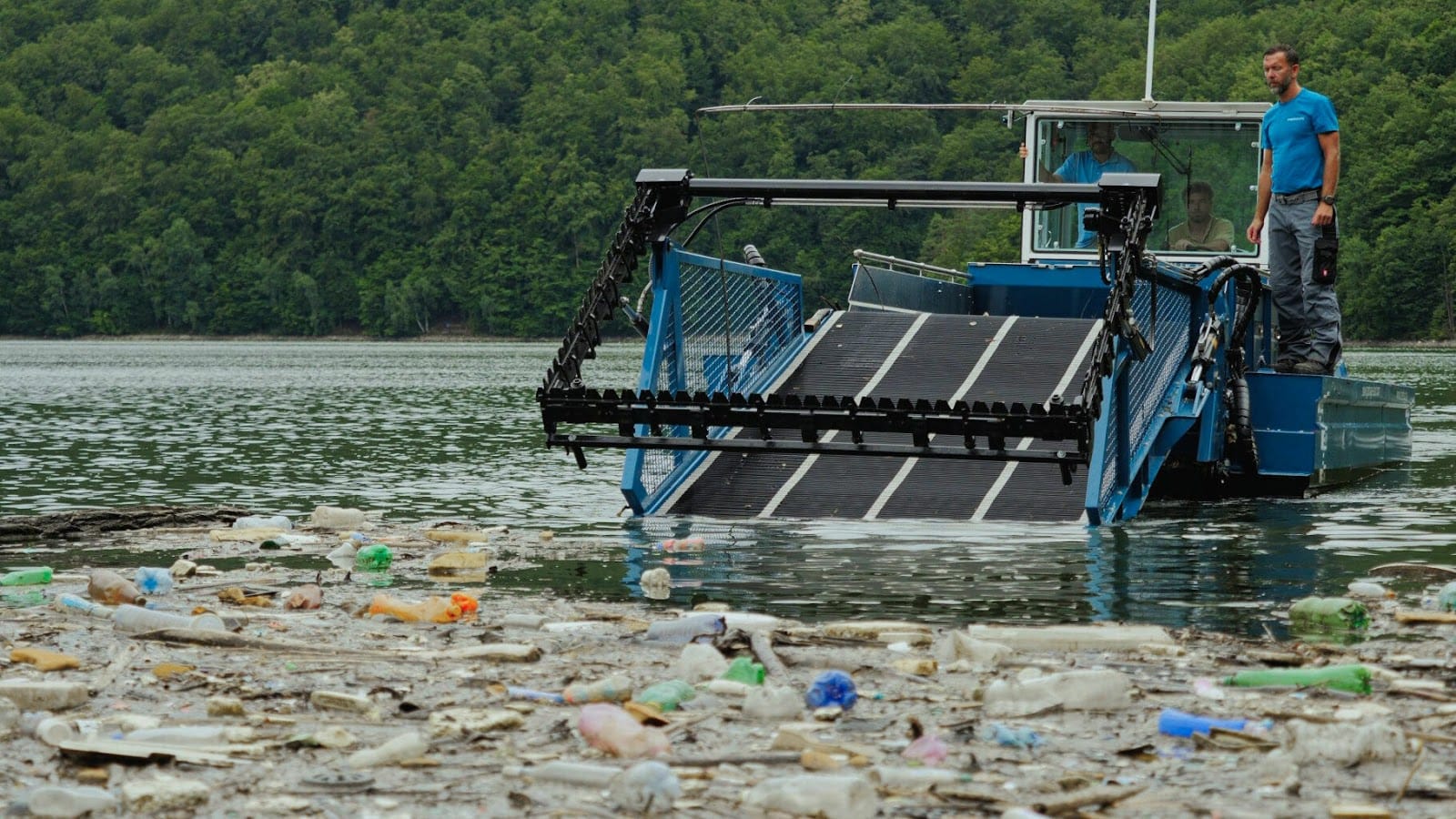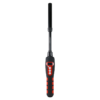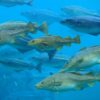Water pollution is one of the most pressing environmental challenges, with millions of tons of plastic and waste entering our rivers, lakes, and oceans every year. Traditional cleanup efforts often rely on manual collection and observational studies, which can be time-consuming and ineffective in addressing the root of the problem. However, recent advancements in Radio Frequency Identification (RFID) technology offer a smart, data-driven approach to tracking litter and improving waterway cleanup efforts.
RFID is a wireless tracking system that uses electromagnetic fields to identify and monitor objects embedded with small RFID tags. Originally developed for inventory and asset tracking, RFID is now proving to be a powerful tool for environmental conservation. When applied to waterway cleanup, it enables real-time monitoring, efficient waste collection, and better waste management strategies. This article explores how RFID technology is transforming efforts to combat water pollution, from identifying waste sources to optimizing cleanup operations.
The Growing Problem of Waterway Pollution
Waterways worldwide are heavily impacted by plastic waste, industrial runoff, and human activities. According to research, over 11 million metric tons of plastic enter the ocean annually, with rivers acting as the primary transport route for land-based waste. The consequences of water pollution include:
- Harm to aquatic ecosystems – Marine animals ingest or become entangled in plastic waste.
- Contaminated water sources – Pollutants in water can seep into drinking supplies, affecting human health.
- Economic losses – Coastal communities, fisheries, and tourism industries suffer due to polluted waters.
The challenge lies not only in removing litter from waterways but also in tracking its sources, movements, and impact. This is where RFID technology plays a crucial role.
How RFID Technology is Revolutionizing Waterway Cleanup
RFID technology enhances traditional cleanup methods by offering precise, automated, and scalable tracking of waste. Here’s how it works:
Tagging Waste for Identification
RFID tags are attached to different types of waste (plastic bottles, fishing nets, or industrial debris). Each tag has a unique identifier, allowing researchers to track the waste’s journey from its point of entry into the waterway to its final destination.
Deploying RFID Readers in Waterways
Fixed or floating RFID readers, such as buoys, drones, and autonomous water vehicles, scan for tagged waste as it moves through rivers and lakes. These readers capture real-time data, which is then transmitted to databases for analysis.
Analyzing Waste Patterns
With RFID data, scientists can determine:
- Hotspots of waste accumulation
- Common sources of pollution (factories, urban runoff, or improper disposal sites)
- How waste moves through different waterways and impacts ecosystems
Enhancing Cleanup Efficiency
By identifying pollution hotspots, cleanup teams can prioritize the most affected areas, deploy targeted interventions, and measure the success of waste removal efforts.
Promoting Policy Changes and Public Awareness
RFID data provides concrete evidence for policymakers to implement stronger waste management regulations. It also raises public awareness, encouraging communities to reduce littering and improve recycling habits.
Key Benefits of Using RFID for Waterway Cleanup
Real-Time Waste Tracking
RFID allows for continuous monitoring of tagged litter, providing insights into how different waste materials behave in waterways. This is particularly useful in understanding:
- The speed and direction of waste movement
- The lifespan of plastic debris in the water
- The influence of currents and tides on litter distribution
Improved Cleanup Strategies
Instead of conducting random or large-scale cleanups, RFID enables data-driven interventions by identifying pollution hotspots. Cleanup teams can focus on areas with the highest waste accumulation, optimizing resource allocation and increasing efficiency.
Reduced Manual Effort and Cost
Traditional cleanup methods require human observation and extensive labor, which are both costly and time-consuming. RFID automates tracking and reduces reliance on manual surveys, leading to cost savings and better resource management.
Enhanced Research and Policy Development
RFID data helps researchers understand the lifecycle of plastic waste, which is crucial for shaping effective waste management policies. Governments and environmental organizations can use this information to implement regulations such as:
- Banning single-use plastics in high-pollution areas
- Increasing accountability for industries contributing to water pollution
- Developing new recycling and waste disposal methods
Integration with Other Technologies
RFID works seamlessly with GPS, satellite imaging, and AI-powered analytics, enhancing its impact. Drones and underwater robots equipped with RFID readers can further improve tracking and cleanup efforts by accessing hard-to-reach areas in rivers and oceans.
Real-World Applications of RFID in Waterway Cleanup
Tracking Plastic Waste in Rivers
Several environmental organizations and research institutions have used RFID to track how plastic waste travels through river systems before reaching the ocean. These studies help pinpoint major pollution sources and assess the effectiveness of waste management strategies.
Preventing Ghost Fishing Gear Pollution
Lost or abandoned fishing nets (ghost nets) are a major threat to marine life. RFID technology is being used to tag fishing gear, allowing authorities to track and retrieve lost nets before they harm aquatic ecosystems.
Smart Waste Bins and Recycling Programs
Cities implementing RFID-enabled waste bins encourage residents to dispose of plastic properly. These bins can detect and record the type of waste disposed of, improving recycling efforts and reducing litter in nearby waterways.
Ocean Cleanup Projects
Organizations focused on large-scale ocean cleanups are combining RFID with AI-driven waste collection systems to automate the identification and removal of marine debris. This approach increases efficiency and ensures waste is properly categorized and recycled.
Challenges and Considerations
While RFID offers a promising solution for tracking litter, it is not without challenges:
Environmental Impact of RFID Tags
Using plastic RFID tags for tracking waste may contribute to pollution if not managed properly. Researchers are developing biodegradable and eco-friendly RFID tags to minimize their impact.
Cost and Infrastructure Limitations
Deploying RFID readers in vast waterways requires significant investment in technology and maintenance. Governments and environmental organizations need to collaborate with private sectors to fund and implement RFID tracking systems.
Data Privacy and Security
Large-scale RFID tracking generates vast amounts of data. Ensuring secure and ethical use of this information is essential for gaining public trust and compliance.
Conclusion
Waterway cleanup efforts are often hindered by a lack of accurate tracking and efficient waste management strategies. RFID technology presents an innovative solution, enabling researchers, policymakers, and environmentalists to monitor waste movement, identify pollution hotspots, and optimize cleanup operations.
As RFID continues to integrate with AI, drones, and smart waste management systems, it holds the potential to revolutionize water conservation and protect aquatic ecosystems for future generations. By investing in RFID-powered cleanup efforts, we can take a significant step toward restoring our waterways and reducing global plastic pollution.










Add comment